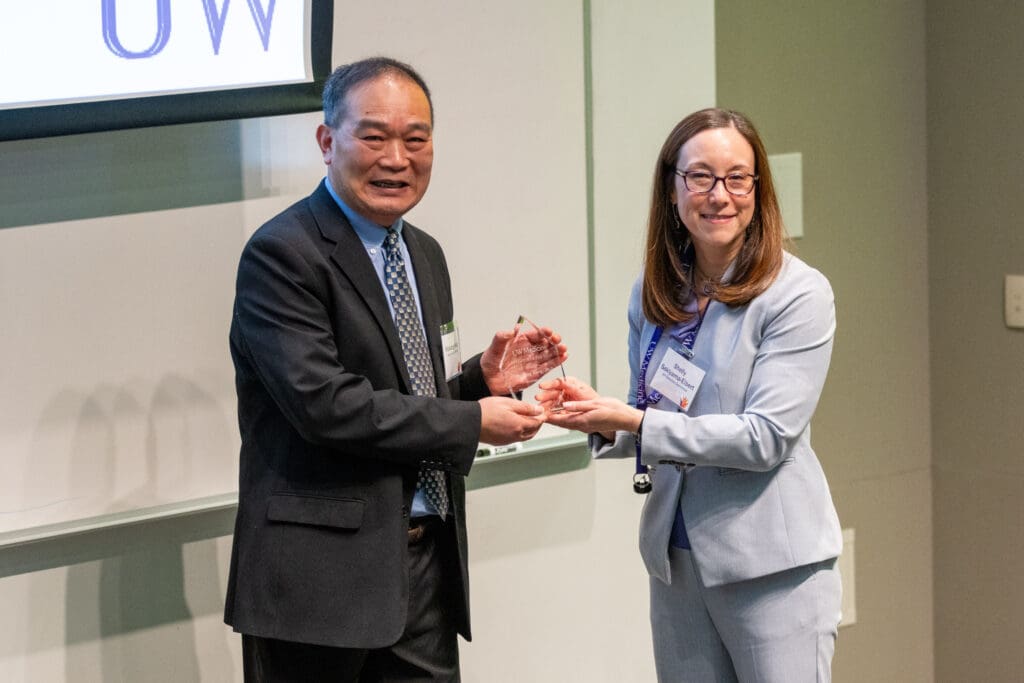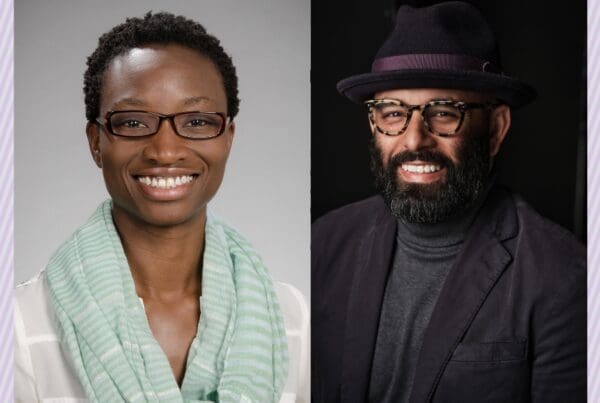Ruikang “Ricky” Wang, PhD, has always had a passion and desire to apply engineering techniques to medicine. When he was young, his dream was to become a scientist to improve the quality of life of others.
And it came true. Wang’s Biophotonics and Imaging Laboratory combines bioengineering with ophthalmology to create new technology to help treat ocular diseases, advancing the field. On Nov. 1, 2023, he was awarded for his work as UW Medicine’s Inventor of the Year.
How tiny measurements inspired monumental research
In college, Wang focused on precision engineering and instrumentation at Tianjin University in China, where he learned how optics and light could be used to provide sub-micron-level measurements — extremely tiny measurements that are less than one-millionth of a meter — in dimensions.
“Precision measurements are critically important in all disciplines, although sometimes we do not recognize it,” says Wang. “Because of this college study, I went to the University of Glasgow in Scotland for my PhD dissertation with a goal to improve and enhance my education and knowledge in optical engineering and how it can be better utilized for industrial and biomedical applications.”
After earning his PhD and a year after his post-doctorate work, Wang accepted his first faculty position at Keele University Medical School in England, where he created a lab to develop optical imaging technologies that can provide micrometer-scale resolution for medical applications.
“I created the lab with an aim for my work to be clinically translatable to benefit patients and improve their quality of life,” says Wang.
In addition, Wang became the first chair in Biomedical Optics at Cranfield University in England.
“I devoted my efforts to further develop optical imaging technologies for biomedical applications,” says Wang. “In 2005, I moved my lab from England to Portland, Oregon at Oregon Health and Science University, and continued working to develop clinical translation technologies using optical techniques.”
After spending five years in Portland, Wang relocated his lab to Seattle, where he now works as a professor in the Bioengineering and Ophthalmology Departments at the UW School of Medicine. He holds the George and Martina Kren Endowed Chair in Ophthalmology Research.
It was here where Wang’s lab invented optical coherence tomography angiography, or OCTA, an imaging technique that provides 3D blood flow imaging in small, vulnerable blood vessels.
“The OCTA technology developed in my lab is now FDA-approved and commercially available and is routinely used in the ophthalmic clinic to image the patients,” says Wang.
This type of imaging is noninvasive and doesn’t involve any contrast agents when imaging the capillary flow in the eye.
“We know that microcirculation, or capillary flow in the eye, is involved in the development of several vision-threatening diseases, including diabetic retinopathy, age-related macular degeneration and glaucoma,” says Wang. “The ability to non-invasively image microvascular information in the eye helps the early diagnosis, clinical treatment planning and monitoring of the progression of these diseases, ultimately saving the patient’s sight.”
Looking forward
When asked about the award, Wang expresses his excitement.
“To me, the award means that the technologies developed in my lab are making an impact and are helping patients,” he says.
In the future, Wang plans to continue developing and improving optical imaging technology, which could potentially include the combination of artificial intelligence and deep learning, with the hope it will provide more possibilities for reliable, convenient and rapid measurements to help patients manage their various health and medical problems.

Ruikang Wang receives Inventor of the Year award presented by Shelly Sakiyama-Elbert.



